Leash Pulling: how to stop your dog pulling on leash
Although we might imagine walking down the street with our laidback dog, walks are an absolute nightmare for many dog owners. If you are one of those whose dog pulls on the leash the moment you begin walking, and it seems that the dog is walking you, then read this article as we explore the topic of leash pulling.
Why Do Dogs Pull
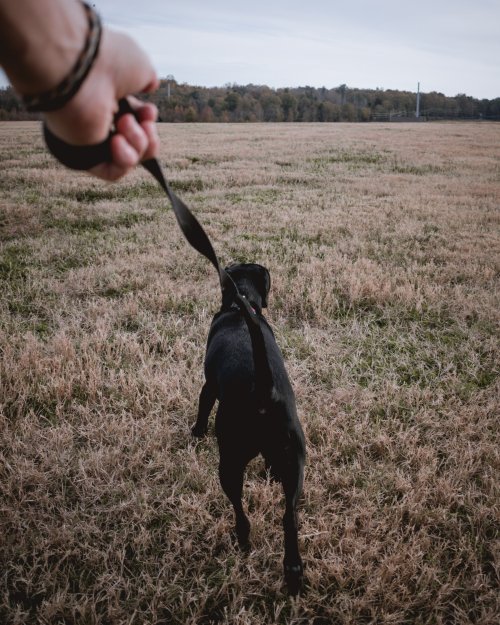
Whenever we are looking to replace or rectify an unwanted behaviour, it can be helpful to understand why that behaviour occurs in the first place. There is a belief among some people that dogs pulling on leashes is a dominant behaviour, and they use it to show that they are the pack leader or alpha; the truth is, in most cases, relatively harmless. When we ask why dogs pull, the answer is simple—they want to go somewhere without regard to the leash or handler, which are just oversights or impediments to their plan.
Most often, dogs love walks. During this stimulating and exciting part of their day, dogs want to explore the environment in which they find themselves freely. However, humans are not their ideal walking partners because, from a dog's perspective, our pace does not match theirs; it is either too fast or too slow and is in too much of a straight line. Instead, dogs naturally move across trails picking up scents or making their own.
Once we attach the leash, the dog is often expected to walk nicely beside us without stopping to sniff or explore their world. For many dogs, sniffing is gold, and their desire to get a closer whiff of the scent they have picked up overrides their willingness to walk beside us. It's not just scents, though; there are many things dogs want to explore close-up using their different senses, and as they move towards those things, we get dragged along.
By reaching their target, they are rewarded, albeit inadvertently.
Puppies and Pulling
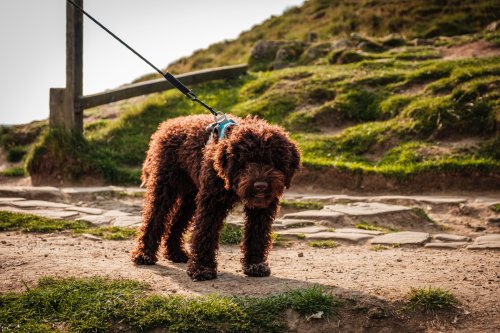
Leash pulling is usually a habit that starts as a puppy. When we put a leash on a puppy (or an older dog that isn't used to it), they are often confused because they don't know what it means. They may start pulling backwards or forwards. If they realise that, through pulling, they can still reach their destination - even with the owner in tow, then it makes sense that the leash is there to pull the owner to the point of interest.
It's important to remember that puppies' bodies are still developing, and leash pulling can have adverse health consequences. So teaching them about leash pressure, in a kind and patient manner early on in life will set you and your puppy up for successful loose leash walking.
Dogs Bred for Pulling
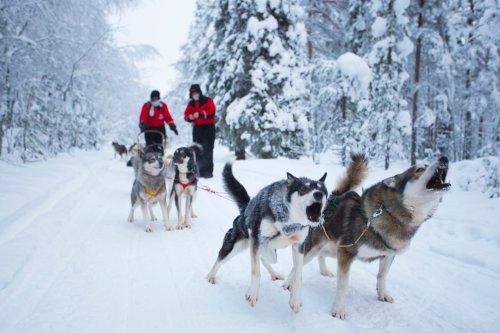
It's true! Some dogs have been bred for centuries to pull carts, sleds and wagons. It has allowed them to be biologically equipt with tremendous strength, and to this day, many have an innate desire to unleash that strength through pulling—often while on daily walks. Such breeds include Bernese Mountain dogs, Newfoundland, Saint Bernard, Great Pyrenees, Huskies, or Bouviers des Flandres.
But to satisfy your pet's ancestral urge to let loose its strength, allowing the leash to be pulled on daily walks is not a good solution. Instead, you can use an appropriate harness and get started in one of the many fun sports designed specifically for these dogs.
Mushing is one example—a sport and transportation method powered by dogs. One or more dogs pull a sled on snow or a cart, bike or scooter on dry ground.
Carting is slower but often requires more power; the American Kennel Club describes pulling carts as a great opportunity for dogs who enjoy pulling to do their preferred exercise in an acceptable manner.
Canine cross country—CaniX—requires the handler to do cardio work. In this sport, the handler runs behind the dog. A special harness is needed for the handler and dog, with a shock-absorbing line that remains relatively taught throughout the run (or walk). This sport is for people who like to keep fit with their dogs.
So if your dog loves pulling, you can use that to your advantage. Just be aware that dogs can learn to pull whilst engaging in their sport and to walk nicely down the street.
My Dog Has Always Pulled
There are two things to be mindful of if your dog has always pulled. Firstly, it will take time for them to learn that pulling isn't rewarding, and secondly, pulling isn't pleasant for the dog when we do it to them, either.
Avoid pulling or jerking the leash; instead, it is better to teach the dog to feel subtle signs of leash pressure and what is an appropriate action to take.
Pulling can be frustrating for owners, especially when walking large dogs; it can also have negative health consequences and cause injuries.
Injuries as a Result of Leash Pulling

Injuries can result from pulling regardless of the equipment we use on the dog, head collar, neck collar, constriction collar, harness, etc. There is much debate about what equipment is best for walking dogs; however, due to the huge variability of shape and size of dogs, there is no one-size fits all approach. So it's essential to know how the equipment you choose to use works and what potential injuries might result.
The least harmful equipment is considered to be a well-fitted y-front harness. Although designs vary, please contact a knowledgeable Canine Biomechanics Specialist who can help you with harness fit. You can read more about the design and fit of dog harnesses here.
Studies have been conducted on how different collars disperse pressure around a cylinder (representing a dog's neck) under a range of lead pressures. The results showed significant variability between the type of collars or construction material used, the contact area where pressure was applied, and the peak forces applied to the neck.
When pressure is applied to the neck through the collar, it loads the dog's respiratory system, which may result in difficulty breathing or choking. There has been a reported case of significant brain damage caused by the punitive use of an unrestrained constriction collar that was tightened through the human, pulling it tight for such a time that the dog was affected that it needed to be euthanised. Therefore, collars should not be used in a manner that allows the dog's airway to be compressed, reducing its ability to breathe.
The thyroid gland, located alongside the dog's airway, may be injured with excessive force applied through the collar. This gland produces hormones that play a significant role in your dog's metabolism and can cause major problems when those hormones are produced at abnormal levels. Anecdotal reports have shown a link between thyroid disease and heavy pulling, especially in larger breed dogs with long-term exposure to pulling on a collar. This demonstrates that trauma to the thyroid gland caused by leash pulling is a likely cause of thyroid disease.
Pulling can also harm the nervous system, causing damage to peripheral nerves. This type of injury can cause strange sensations and tingling that radiates down the dog's body, primarily through the limbs.
Since pulling on the leash puts a lot of pressure on the dog's neck, it may also reduce blood flow to the head, which in chronic cases may lead to problems with the eyes and ears. As discussed earlier, permanent debilitating brain damage can also occur from excessive force or strangulation applied through the leash to the dog's neck.
How to Approach a Dog That Pulls
If your dog is a chronic leash puller, the best first step is to check whether this behaviour has previously harmed your pet's health and had a detrimental impact. Thermal imaging is a simple, quick and stress-free procedure that will give you an insight into painful places on your dog's body. It is a valuable tool for identifying areas of concern (which emit higher or lower amounts of infrared radiation) and helping you to get the most out of your healthcare consultations or treatments.
In conjunction with assessing your dog's physical health, engaging a dog trainer specialising in teaching loose lead walking will be imperative. These training sessions will help you and your dog learn to communicate better through the leash without force and turn your walks into a pleasant experience.
The Right Equipment to Prevent Leash Pulling
Sometimes it is necessary to limit the dog's pulling force on the handler. However, training is more important because any equipment misused has the potential to cause harm or injury to either the handler or the dog.
There is a large market for anti-pull equipment, but just because something is heavily marketed or even popular, it doesn't mean it is safe to use. Some equipment is designed to redirect the force from the leash pulling into a rotation force, thus changing the dog's direction as they pull. Anti-pull equipment may temporarily resolve the problem, but it can also worsen things or cause more significant harm to the dog.
It's essential to work with a dog trainer when using anti-pull equipment, ensuring you and your dog can effectively leverage the tool to improve communication until the desired behaviour is understood. Your trainer should be able to advise on the safety of the equipment and the risks associated with its misuse.
The ultimate goal is to teach your dog new behaviour so that you can reduce the risk of injury and have an enjoyable, comfortable walk.
Leashes
When selecting a leash, there are a few things to consider.
Length: The dog will need enough length that it can move around comfortably but short enough that the handler can maintain control.
Weight: The buckle and leash material should be a suitable weight for the size of the dog; if they are too heavy it can cause neck strain in the dog. As your dog learns about leash pressure, you can opt for lighter-weight buckles and leash materials.
Material: The material should be gentle on the handler's skin
Retractable leashes: These leashes are not well suited for teaching loose lead walking, they can cause friction burns and have also been known to sever fingers.
Elastic leashes: Any leash with a bungee or elastic can make learning loose lead walk more difficult. If you training a loose lead walk, opt for a leash that doesn't stretch.
Head Collars
Head collars work by redirecting the pulling force and turning the head. Some cause the dog's neck to flex sideways (the nose comes around towards the shoulder), and other designs cause the nose to drop down towards the chest. Because the head is redirected, these are best used when there is low acceleration involved; we don't want the head whipping around and causing an injury to the neck.
Head collars should not be able to slip down the dog's neck; the pressure is applied over the skull rather than the airway. However, many dogs don't enjoy the sensation of something across their nose, which is highly sensitive. It's important to work with a knowledgeable trainer if you are opting to use a head collar because even though they are touted as a gentle option, they can still do harm if used incorrectly.
Are Training Collars Better?
There is an extensive range of training collars, such as martingale, choke, prong and even electric shock collars. In the article The Mechanics of Prong Collars, we wrote about how prong collars work and the risk involved in their use.
On the other hand, the limited slip collar, or martingale as it's otherwise known, can be a good option for those transitioning to a collar or wanting to learn loose lead walking but not using a head collar or harness. These collars are designed to constrict just enough so that they can not slide over the dog's head; because they tighten (not to the point of causing airway obstruction like a choke collar), the force of the lead pressure is felt over a larger surface area of the dog's neck than a flat collar.
It's important to remember that training trumps equipment. All equipment used incorrectly can cause harm; some, however, run a high risk of causing physical or psychological damage.
Harnesses
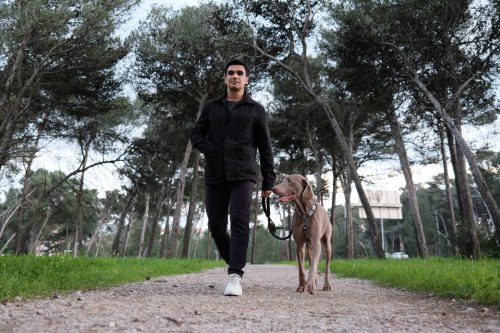
As mentioned above, a well-fitted Y-style harness is a good option for preventing neck injuries. However, many people opt for No-Pull harnesses, which are designed to redirect the pulling force and either turn the dog to the side or constrict across the dog's shoulders.
Anything that alters the dog's normal biomechanics can lead to structural issues. Hence, it's advisable to use training tools only as long as is needed and then have the dog walking equipment that doesn't alter their range of motion or normal gait pattern.
Training Skills to Prevent Leash Pulling
The equipment with which you will have better control over the dog's movements during walks is only a temporary solution. Therefore, you should aim to correct the behaviour so that you can walk down the street with your pet without worry. And for good leash manners, training is inevitable.
It is best to embark on this journey with professional support. Look for a local trainer to help you correct your dog's behaviour. Enrol in an online training course or perhaps an online one-on-one consultation with a trainer that will also bring quality guidance and introduce you to effective methods for teaching your dog to walk calmly.
For your part, always remember whether your dog is in a learning state when you want to start the training. Be perceptive of the dog's arousal level, high or low, or if the influence of the environment is too distracting (for example, too many people or other animals), which will affect the optimal training zone of your dog.
Loose-Leash Walking
Trainer Stephanie Champagne explains loose-leash walking as a relaxed method: the owner is relaxed, the dog is relaxed, and the leash is also relaxed (loose). The dog doesn't have to be always next to your leg (this is called heel position): it can be behind you or in front of you without tightening the leash at the same time. It is the type of dog walk you want to achieve, but it requires patience and continuous work where professional training can help.
The most important thing is to stop walking when the leash tightens. Stand still, be silent and do not move forward until the leash is loose. This will teach your dog that walking next to you on a loose leash means moving forward, and pulling means stopping. Do not jerk the leash back or push your dog; stand and wait calmly and quietly. If your dog doesn't turn towards you, try walking a few steps in the opposite direction to regain focus.
Your dog will learn that leash-pulling is undesirable, and you will establish a strong bond and understanding with your dog through clear and continuous communication.
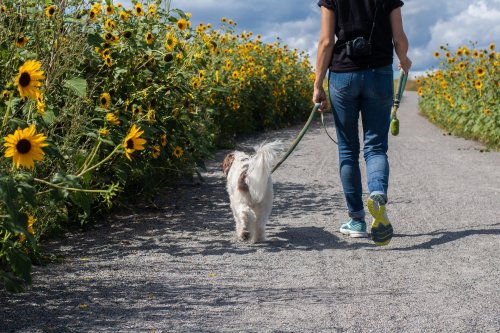
Headline Photo by Chris Boland www.chrisboland.com




Leave a comment